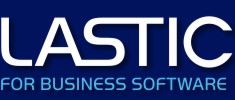 |
|
|||||||||||||||||||||||||||||||||||||||||||||||||||||||
www.lastic.com |
||
|
Key FeaturesVisual Interface Design A rich array of standard and specialised Windows controls are supported, allowing for the development of application interfaces both familiar and intuitive to the user. Click here for further details... Help may be provided at the form and individual control level. Hyperlinks allow users to navigate easily through your help files. All help information is held centrally within the Caché / M database. Access To PC Network Printers, files and desktop applications (e.g. Word, Excel) are easily accessed from within your Caché / M routines. Dynamic Data Exchange (DDE) Using the function, the Caché / M application can start up a PC application, open DDE conversations, send and receive data, issue a series of commands and terminate the conversation. Conversations can remain open for repeated data and command actions - such as generating a series of customised letters or invoking and populating spreadsheets. DDE conversations are automatically terminated when the originating window is closed. Graphics Generation Options include pie charts, histograms, and line graphs - multiple plots and 2D or 3D presentation. Each graph is created in a separate form and can be re-sized, rotated, re-styled and re-coloured by the user. It is possible to repeatedly re-draw such graphs producing analyses in various forms from datafeeds or from your database. Configuration PC presentation configuration allows a consistent 'look and feel' to be applied throughout all windows of an application or system, manageable from a single location. Options include fonts, colours, control sizing and function key usage. Connectivity between client PCs and the Caché / M system is established through TCP/IP with a choice of Telnet (with or without an emulator) or raw TCP (utilising Lastic GUI server). Mixed Environments ANSI Emulator |
| HomeLegal/PrivacySitemap | Copyright © 2013 Lastic Limited. Website by Fluid Media Ltd. |